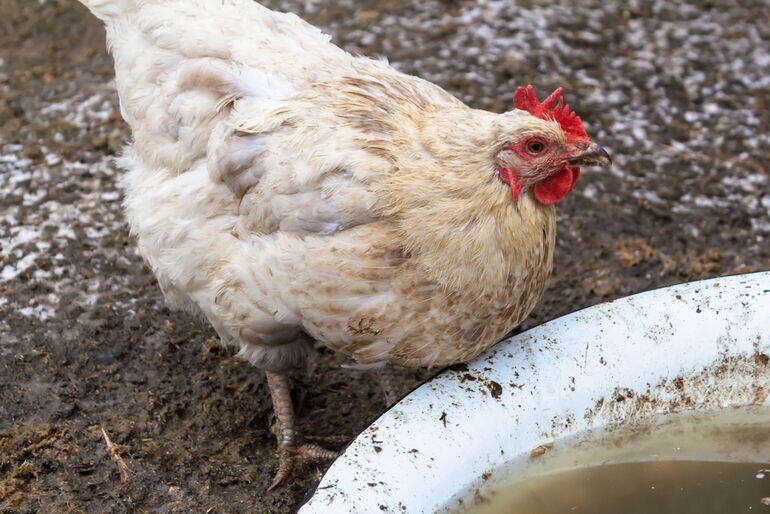For many homebrewers, sustainability and self-sufficiency extend beyond the brewing process. Whether it’s tending a garden or raising backyard chickens, these activities complement the mindful approach to brewing that emphasizes precision and care. Just as maintaining precise fermentation temperatures is crucial for brewing quality beer, ensuring a consistent water supply for your chickens in winter is vital for their health. Dehydration, stress, and health complications can arise when water freezes, but solutions like Chicken Water Heater—akin to tools used in brewing—can keep your flock thriving through the colder months.
This article draws parallels between brewing ingenuity and poultry care, providing practical tips to ensure your chickens stay hydrated while reinforcing the sustainable values cherished by homebrewers.
The Role of Water in a Chicken’s Health
In every aspect of a chicken’s life, water plays a crucial role from digestion to regulating body temperature. Many think that they consume water just to stay hydrated, but water supports many psychological functions, like:
- Egg Production: Chickens need sufficient water to lay eggs consistently. A dehydrated hen may stop laying altogether.
- Digestion: Water digests the food effectively. When digestion takes place properly, it prevents many health diseases.
- Body Temperature Regulation: Chickens rely on water to maintain their internal body temperature, which is especially important during winter when external temperatures drop.
Without warm, accessible water in winter, chickens are at risk of dehydration, reduced egg production, and even frostbite.
The Risks of Frozen Water
In freezing temperatures, water bowls or troughs can freeze quickly, leaving your flock without a drinkable source. For homebrewers, this challenge mirrors the importance of precise temperature control during fermentation — where even small variations can impact the final brew. Similarly, keeping water accessible for your chickens in winter requires creative problem-solving, like insulating troughs with materials repurposed from brewing equipment or using heat sources similar to those used in maintaining fermentation systems. Without access to warm, drinkable water, chickens face serious health risks:
- Dehydration: Lack of hydration sometimes leads to stopping eating foods, which significantly weakens their immune system.
- Stress and Aggression: Water is helpful in managing stress too, as such circumstance leads to aggressive behavior or bullying.
- Reduced Egg Production: Hens need water to produce eggs. Even short periods of dehydration can disrupt their laying cycle.
- Health Complications: Prolonged dehydration can result in kidney damage, reduced metabolism, and other severe health issues.
How Does a Chicken Water Heater Solve These Problems?
A chicken water heater ensures consistent temperature and prevents freezing, much like how brewers maintain precise temperatures for fermentation. This tool reduces the need for manual thawing, allowing more time for brewing while keeping your flock hydrated and healthy year-round. Here are a few chicken Water Heater other advantages:
- Convenience: If the water is frozen, it requires manual efforts to remove and replace but with this tool, it is easy to keep the water as warm as to drink.
- Continuous Hydration: With access to warm water, chickens can drink whenever they need, reducing stress and promoting health.
- Safety: Unlike improvised solutions like heated rocks or candles, modern water heaters are designed specifically for chickens, ensuring safety and efficiency.
Choosing the Right Chicken Water Heater
When selecting a water heater for your flock, consider the following factors:
- Capacity: When it is clear to acquire a chicken water heater, analyzing the size of the flock is essential because larger flocks or breeds demand heaters that are capable of maintaining multiple gallons of water.
- Energy Efficiency: Prefer for energy-efficient models to save on electricity costs. Look for thermostatic controls that activate the heater only when needed.
- Safety Features: Ensure the heater is designed to withstand any possible small damages and can be recovered by itself. Many modern heaters come with such safety mechanisms.
- Durability: Invest in a heater made to sustain during harsh winters and summers.
Practical Tips for Keeping Water Warm in Winter
In addition to using a Chicken Water Heater, there are other steps you can take to keep your flock’s water supply accessible. For example, repurposing materials from your homebrewing setups, such as old kegs or insulated containers, can help prevent freezing while aligning with creative resourcefulness. These methods not only ensure hydration for your flock but also showcase the sustainable and practical mindset shared by homebrewers and chicken keepers alike.
- Place Water Inside the Coop: Position the water source inside the coop, where it is shielded from wind and freezing temperatures.
- Insulate the Water Container: Use insulated water containers to help retain heat longer.
- Provide Warm Water Regularly: If you don’t have a heater, you can add warm (not hot) water to the container multiple times a day.
- Monitor Water Levels: Regularly check the water supply to ensure it hasn’t frozen and is sufficient for your flock.
Addressing Common Concerns
You may be worried about the cost or safety of using a water heater. However, modern heaters are designed to be energy-efficient and safe for use around animals. Additionally, the investment in a water heater pays off by reducing labor and ensuring the health of your flock, which is invaluable during harsh winters.
Conclusion
Keeping your flock’s water warm during winter is not just a seasonal necessity but a fundamental part of responsible poultry care. Homebrewers understand the importance of temperature control to achieve a perfect brew, and the same careful attention can ensure your flock stays hydrated and healthy. Tools like chicken water heaters, along with creative solutions such as repurposing insulated brewing materials, showcase the resourcefulness shared by both communities.








